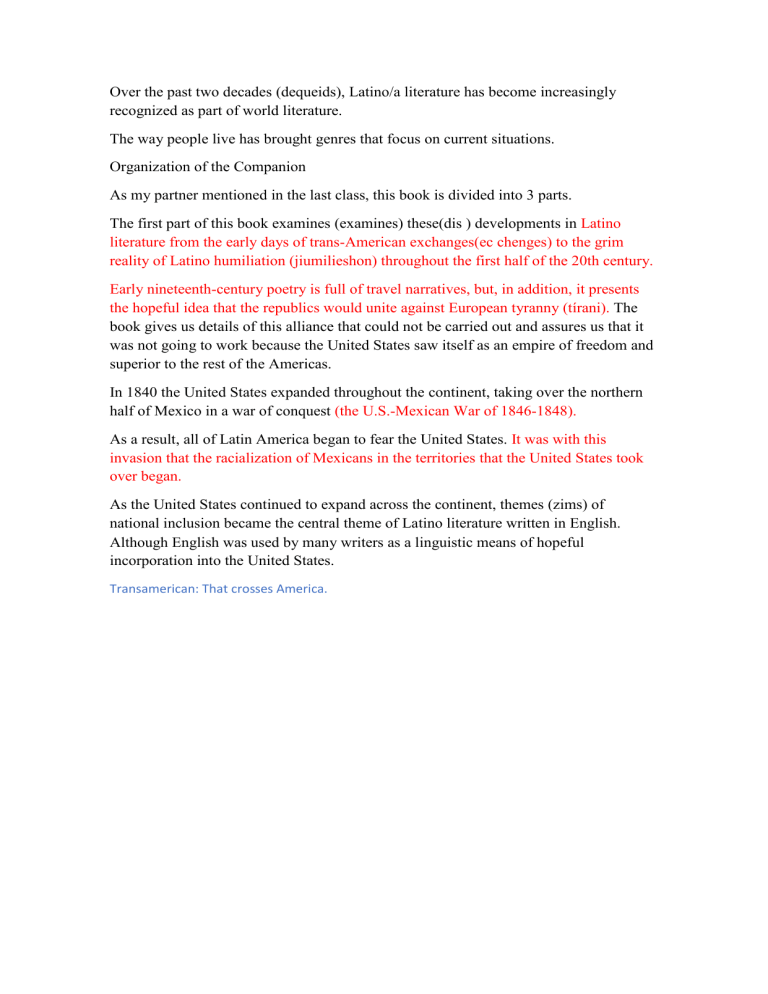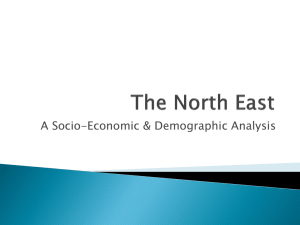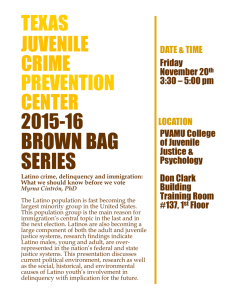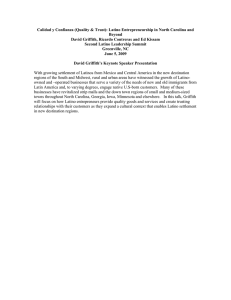Latino Literature Evolution: Trans-American Exchanges to 20th Century
advertisement

Over the past two decades (dequeids), Latino/a literature has become increasingly recognized as part of world literature. The way people live has brought genres that focus on current situations. Organization of the Companion As my partner mentioned in the last class, this book is divided into 3 parts. The first part of this book examines (examines) these(dis ) developments in Latino literature from the early days of trans-American exchanges(ec chenges) to the grim reality of Latino humiliation (jiumilieshon) throughout the first half of the 20th century. Early nineteenth-century poetry is full of travel narratives, but, in addition, it presents the hopeful idea that the republics would unite against European tyranny (tírani). The book gives us details of this alliance that could not be carried out and assures us that it was not going to work because the United States saw itself as an empire of freedom and superior to the rest of the Americas. In 1840 the United States expanded throughout the continent, taking over the northern half of Mexico in a war of conquest (the U.S.-Mexican War of 1846-1848). As a result, all of Latin America began to fear the United States. It was with this invasion that the racialization of Mexicans in the territories that the United States took over began. As the United States continued to expand across the continent, themes (zims) of national inclusion became the central theme of Latino literature written in English. Although English was used by many writers as a linguistic means of hopeful incorporation into the United States. Transamerican: That crosses America.





